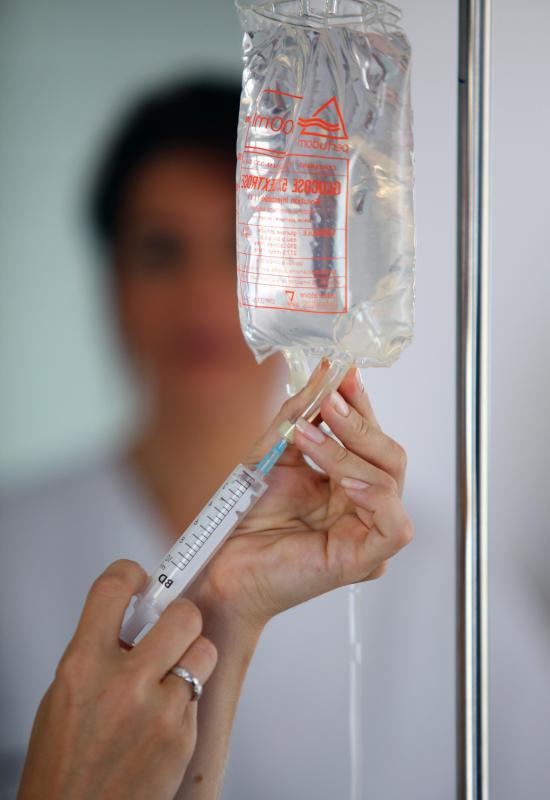At TheHealthBoard, we're committed to delivering accurate, trustworthy information. Our expert-authored content is rigorously fact-checked and sourced from credible authorities. Discover how we uphold the highest standards in providing you with reliable knowledge.
What is an Internal Jugular Vein?
The Internal Jugular (IJ) vein is located on both sides of the neck. Its main function is to provide a portal to drain blood away from the brain and the face. The internal jugular is the largest of all the veins in the neck. In most cases, the right IJ vein will be larger than the left.
As the internal jugular vein travels down the neck, it will connect to the large vein that is located just beneath the clavicle or collar bone. This clavicle vein is called the subclavian vein. The subclavian vein merges with the internal jugular to form the brachiocephalic vein. The brachiocephalic veins from both sides of the body merge to form a large short vein called the superior vena cava. The superior vena cava leads directly into the right atrium or top portion of the heart.

The size of neck veins can be used to help diagnose specific health problems. When an individual has swollen or protruding jugular veins, this is a good indicator of congestive heart failure. The internal jugular vein is connected directly to the right side of the heart. When the heart is not pumping effectively, it will cause increased pressure in the IJ veins. This will cause the IJ veins to swell.

There are other heart conditions that can cause the IJ veins to swell. A condition called cardiac tamponade is a life-threatening condition that occurs when the heart becomes compressed. This can happen when fluid or blood fills up the space between the heart and the outer sac surrounding the heart. Because the heart is unable to pump effectively due to compression, increased pressure builds up in the internal jugular veins.

A rare condition called superior vena cava obstruction occurs when a tumor or blood clot is blocking the superior vena cava. This blockage will keep the veins of the head, neck, and upper body from draining effectively. The result will be upper body swelling and jugular vein distention.
Because the internal jugular vein is such a large vein, it is often used for intravenous line placement. This procedure can be performed at the bedside or in the operating room by a qualified physician. A large hollow tube is threaded into the internal jugular vein and advanced to the opening of the superior vena cava. Once in place and secured, this line can be used to administer intravenous fluids, artificial nutrition, and medications.

It is important to remember the jugular veins are not protected by bone or cartilage. This makes them vulnerable to injury. If a jugular vein gets severely damaged or severed, this will cause a significant amount of blood loss in a very short time. Emergency medical treatment is necessary for survival.
AS FEATURED ON:
AS FEATURED ON:














Discuss this Article
Post your comments